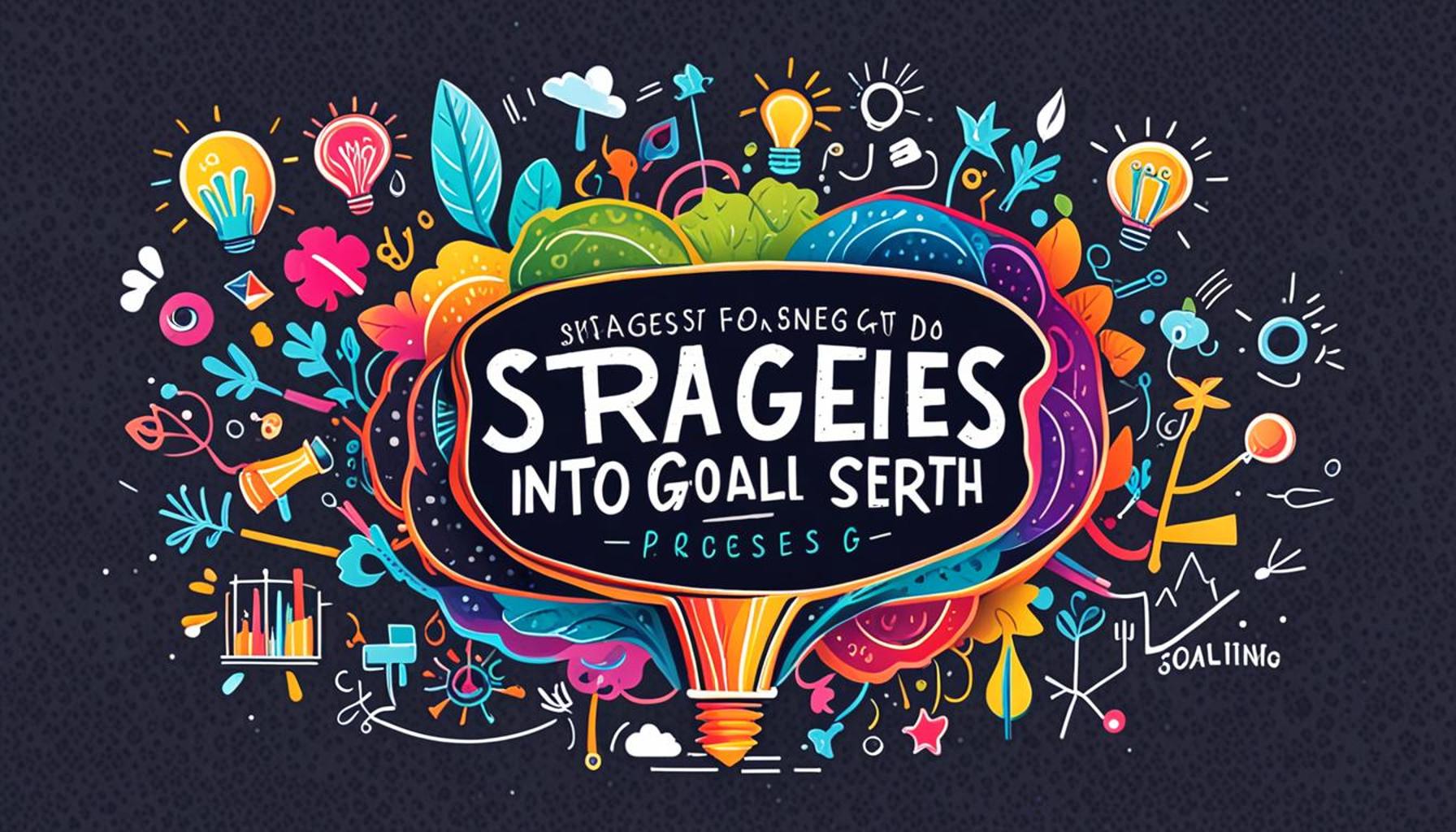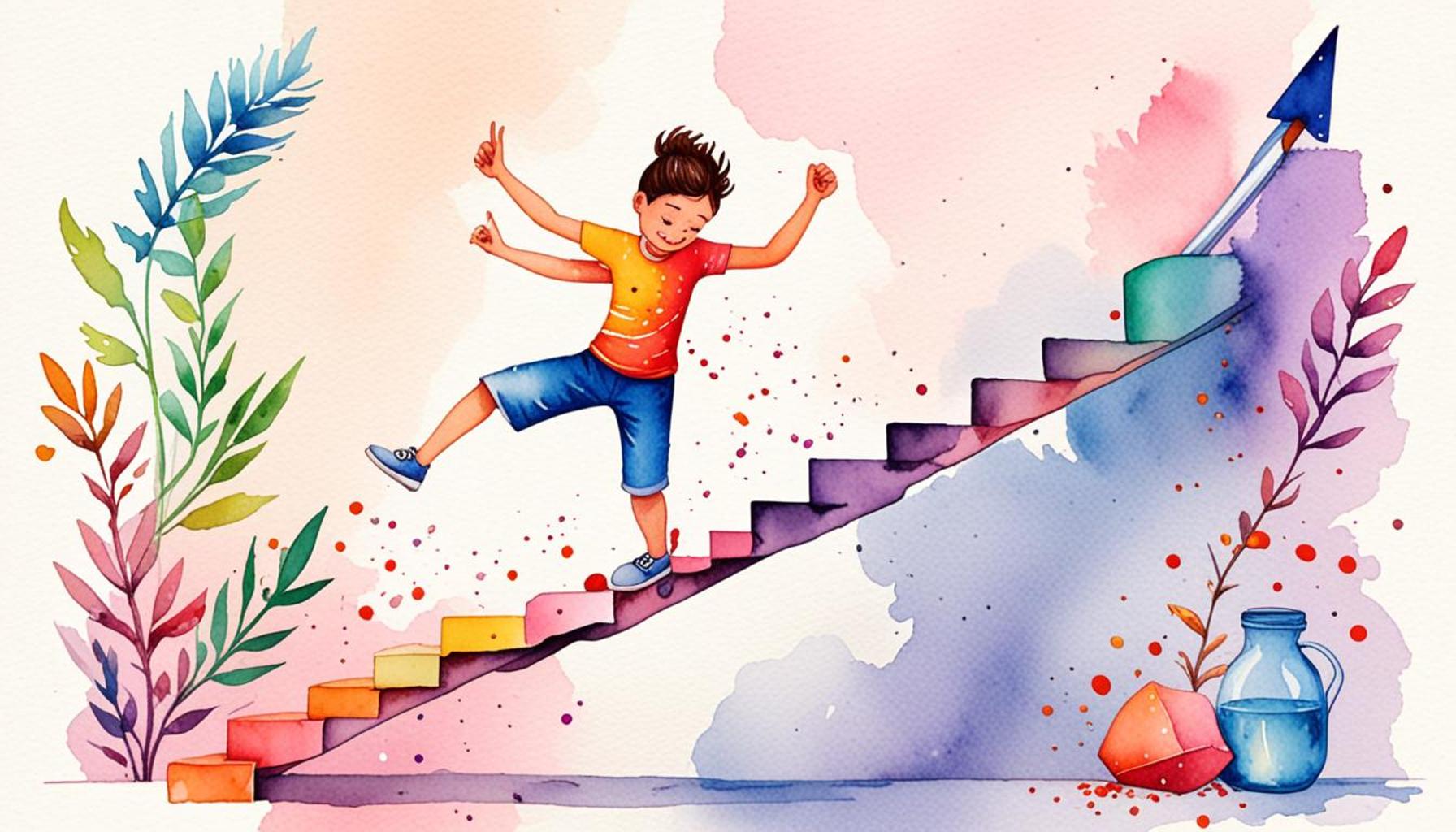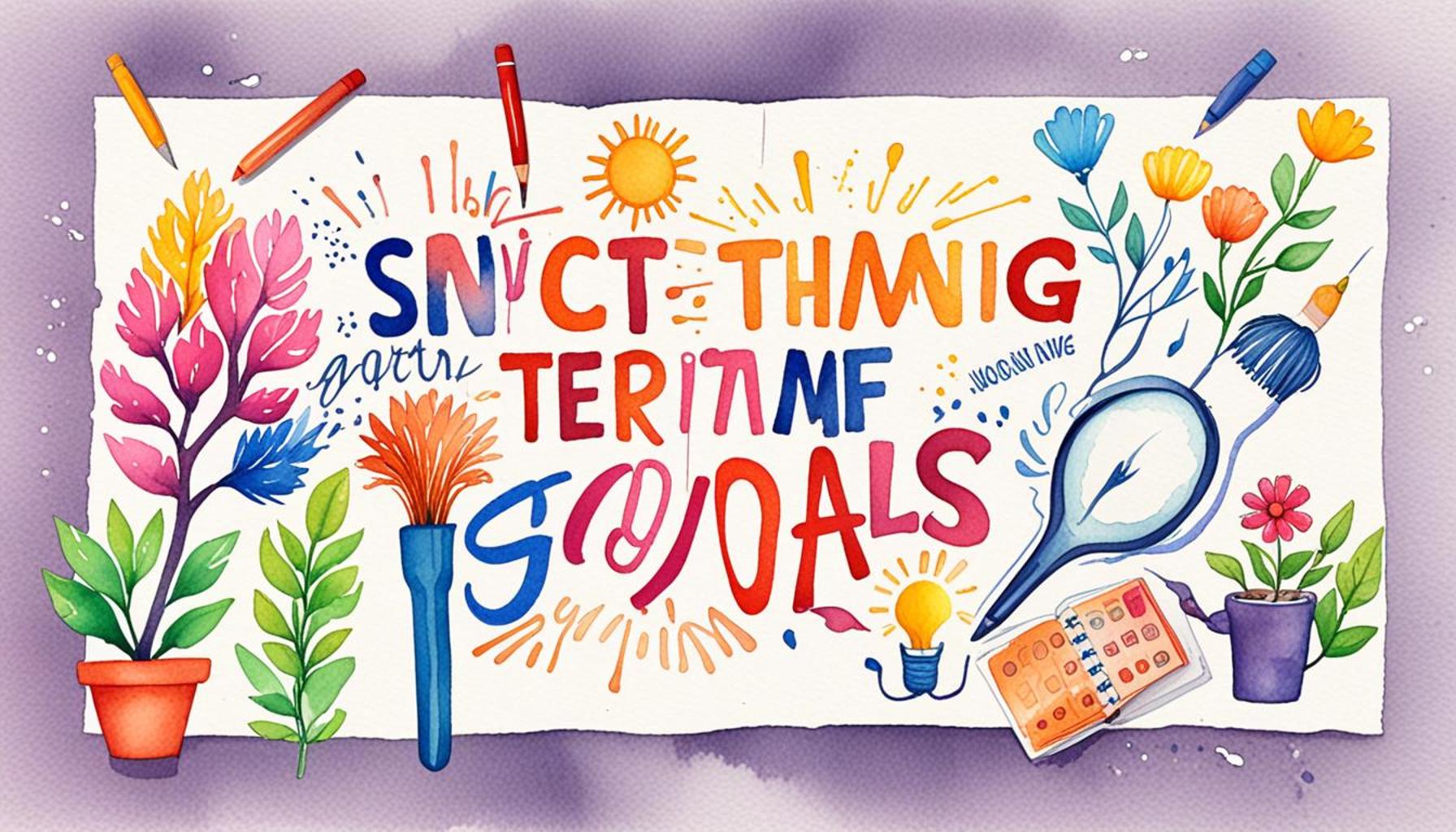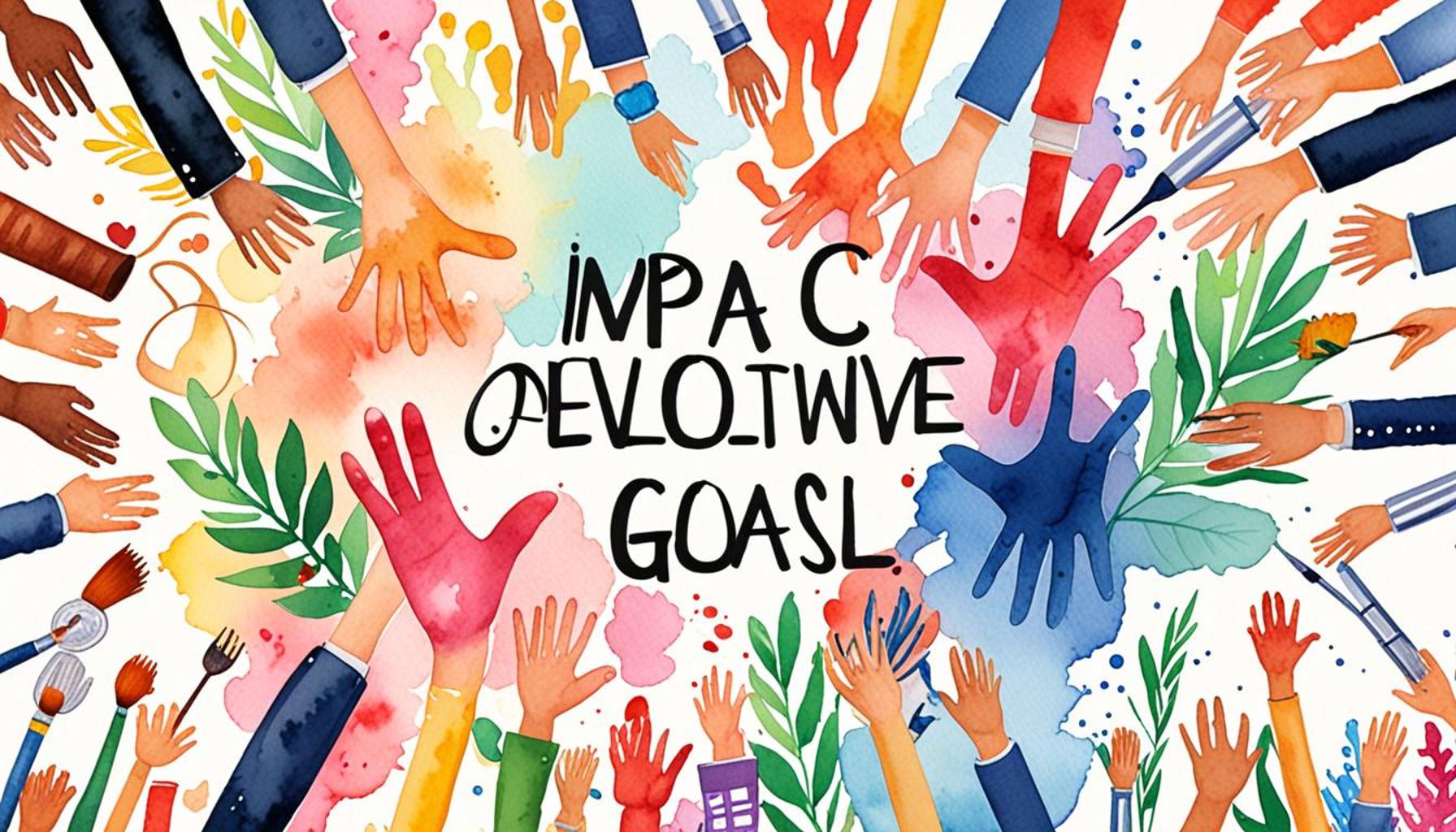Strategies to Integrate Goal Setting into Educational Processes Aiming for the Development of a Growth Mindset

The Importance of Fostering a Growth Mindset in Education
In today’s rapidly evolving educational landscape, fostering a growth mindset among students is essential for their personal and academic success. This approach not only encourages resilience but also helps learners embrace challenges with enthusiasm. Through the lens of a growth mindset, students are more likely to perceive setbacks as opportunities for learning rather than insurmountable obstacles.
Connecting Goal Setting with a Growth Mindset
Understanding the relationship between goal setting and a growth mindset can unleash significant potential. Educators can utilize various strategies to integrate these concepts effectively within their teaching methodologies. For example, the SMART criteria—Specific, Measurable, Achievable, Relevant, and Time-bound—can be a powerful tool for students aiming to define their objectives clearly and realistically.
By crafting SMART Goals, learners gain clarity on their aspirations. For instance, a student might set a goal to improve their mathematics grade by 10% over the next term, creating a framework that guides their study habits. This clarity not only fosters motivation but also instills a sense of ownership over their learning journey.
- Create SMART Goals: Encourage students to set Specific, Measurable, Achievable, Relevant, and Time-bound objectives.
- Regular Reflection: Promote periodic self-reflection on goals, helping learners recognize progress and areas for improvement.
- Collaborative Goal Setting: Involve students in creating their own goals, making them feel more invested in their education.
Benefits of Localized Resources
Additionally, utilizing localized resources can make these strategies more relatable for Nigerian students. For instance, incorporating culturally relevant examples or community-driven projects enhances the relevance of goals. A student in Lagos might set a goal to lead a recycling initiative in their school, blending environmental awareness with leadership skills. Such practices not only promote a growth mindset but also align with the broader educational objectives of community engagement and social responsibility.
Creating a Transformative Learning Environment
As we delve into the details of goal setting integrated within educational frameworks, it’s crucial to explore how these strategies can be effectively implemented. Teachers can create workshops where students collaborate on setting collective goals for their class, fostering camaraderie and shared commitment. This collaborative approach cultivates a supportive environment where students feel empowered to share their aspirations and encourage each other.
The future of education hinges on the ability to inspire, motivate, and develop learners who are not only knowledgeable but also resilient and adaptive to change. By weaving together the principles of a growth mindset and effective goal-setting techniques, educators can pave the way for a generation of students equipped to face the challenges of an ever-evolving world, both locally and globally.
LEARN MORE: This related article may interest you
Strategies for Seamless Integration of Goal Setting in Education
To truly harness the power of goal setting in education, it is essential for educators to adopt structured strategies that resonate with students. A well-defined approach can transform learners’ perspectives, making them more engaged and motivated. By embedding goal-setting practices into daily educational activities, teachers can foster a culture of growth and resilience among students.
Incorporating Goal Setting into Daily Activities
One of the most effective ways to integrate goal setting is by embedding it within everyday classroom activities. Teachers can introduce a “Goal of the Week” concept, where each student or group identifies a specific goal related to their learning objectives. This small yet powerful practice not only encourages students to focus on their targets but also makes the process feel achievable and less daunting. For instance, a student in Port Harcourt might decide to read two extra chapters of a book this week. By publicly sharing these goals, students create a mutual support system, enhancing accountability and motivation.
Engaging Students in Collaborative Goal-Setting Sessions
Organizing collaborative goal-setting sessions encourages peer involvement and gives students a voice in their educational journey. By facilitating workshops focused on individual and collective aspirations, teachers can help students realize the value of group dynamics in achieving goals. For example, pupils can work together on a project, such as developing a school garden, thus enriching their social and technical skills while setting goals that align with community engagement.
Creating an Encouraging Feedback Loop
Feedback plays a crucial role in goal-setting practices. Educators should establish an encouraging feedback loop, where students receive constructive comments on their progress towards achieving set goals. This might include regular check-ins, either through one-on-one meetings or peer evaluations, which reinforce the idea that growth comes from iterative learning and effort. When students recognize that their teachers are invested in their progress, they are more likely to embrace challenges and view failures as stepping stones to success.
Celebrating Milestones and Achievements
Recognition fostered through celebrating milestones significantly boosts student morale. Schools can create a “Wall of Achievements” or monthly award ceremonies that highlight individual and group accomplishments. This concept can be especially relevant in Nigerian contexts, where community and family support are valued. Celebrating even the smallest achievements reinforces the growth mindset by illustrating the belief that hard work pays off and incremental progress is worthy of recognition.
- Daily Goals: Implement a “Goal of the Week” to keep students focused.
- Collaborative Sessions: Encourage students to work together to set group goals.
- Feedback Mechanisms: Create a cycle of constructive feedback to guide progress.
- Celebration of Milestones: Recognize both individual and collective achievements.
Through these strategies, educators have the potential to integrate goal setting seamlessly into educational processes. The intrinsic motivation cultivated through these practices not only prepares students academically but also instills lifelong skills essential for personal growth in an ever-evolving world.
| Category | Details |
|---|---|
| Emotional Regulation | Encourages students to manage emotions effectively, leading to enhanced resilience. |
| Academic Engagement | Integrating goals promotes a deeper investment in learning processes. |
| Personal Ownership | Empowers learners to take charge of their education, resulting in better outcomes. |
| Feedback Mechanisms | Encourages meaningful feedback, facilitating growth and adjustment. |
Incorporating these strategies into educational environments fosters a culture where a growth mindset can thrive. By focusing on emotional regulation, educators can help students navigate the challenges of learning, ensuring that obstacles are viewed as opportunities for growth rather than failures. This paradigm shift is essential in nurturing resilience among students.Moreover, academic engagement is significantly enhanced when learners set and monitor their goals. Students who actively participate in defining their educational objectives typically demonstrate higher levels of motivation and investment. This practice reinforces their connection to learning content, making their educational journey more meaningful.Personal ownership is another extensive benefit linked with these strategies. By promoting a sense of ownership, students become more accountable for their learning paths, which can lead to improved educational outcomes. Educators play a critical role in guiding students to understand their own learning processes, thus paving the way for initiatives centered around self-directed learning.Lastly, the integration of consistent feedback mechanisms is paramount in goal-setting approaches. By fostering a dialogue between students and educators, feedback helps pinpoint areas for improvement and acknowledgment of progress, contributing significantly to the cultivation of a growth mindset. This leads to clearer pathways for academic success and personal development, establishing a comprehensive framework for lifelong learning.
SEE ALSO: Click here to read another article
Building a Framework for Continuous Improvement
In order to cultivate a growth mindset through goal setting in educational environments, it’s vital to establish a framework that encourages continuous improvement. Such a framework not only emphasizes outcomes but also the journey taken towards achieving those outcomes. Educators need to infuse principles of self-reflection, adaptability, and persistence into their teaching methodologies to enhance the overall learning experience.
Fostering Self-Reflection and Goal Adjustment
A key element of goal setting is the ability to reflect on progress. Educators can facilitate self-reflection through structured reflection journals where students articulate their thoughts on the goals they set, the challenges they encountered, and how they adjusted their strategies accordingly. This practice can be exceptionally advantageous for Nigerian students who might be navigating multiple educational demands and cultural expectations. For example, a student may find that a particular study method was ineffective; by recognizing this, they can shift to a different approach, such as group study sessions, which can illuminate alternative pathways to success.
Incorporating SMART Goals in Classrooms
Utilizing the SMART criteria—Specific, Measurable, Achievable, Relevant, and Time-bound—can dramatically enhance the goal-setting process. Educators should train students to set SMART goals, allowing for clearer expectations and providing a roadmap to achievement. For instance, instead of merely aiming to “improve in math,” a student can set a goal to “increase their math test score by 10% in the next semester.” This specificity not only clarifies the objective but also sets a clear timeline for achieving it, reinforcing a sense of accountability and urgency.
Leveraging Technology for Goal Tracking
In today’s digital age, technology offers incredible tools for goal tracking and management. Educators can introduce apps or online platforms designed for tracking personal goals, where students can log their progress, set reminders, and even connect with peers for motivation. For instance, Nigerian classrooms could utilize platforms that allow for collaboration on group projects and facilitate real-time updates on collective goals, enhancing transparency and teamwork. Incorporating technology into the goal-setting process promotes a contemporary approach that resonates with the digital-native generation.
Parent and Community Involvement
Engaging parents and the surrounding community in the goal-setting process can further magnify its effectiveness. Schools can organize workshops that educate parents on how they can support their children’s goals at home. By fostering an environment that values education, both at school and within the family context, students feel a broader support system working toward their success. This could involve community-led initiatives, where local role models or mentors provide insights and encouragement, reinforcing the idea that learning outcomes are a shared responsibility.
- Reflective Practices: Encourage journals for students to analyze their own progress and strategies.
- SMART Goals: Teach students to craft specific, measurable, achievable, relevant, and time-bound objectives.
- Tech-Enhanced Tracking: Utilize apps for goal setting and collaboration, engaging students in progress monitoring.
- Community Engagement: Involve parents and community members to reinforce support towards achieving educational goals.
By implementing these holistic approaches, educators can deepen the impact of goal setting in their classrooms—nurturing a growth mindset that empowers students to take control of their learning journey. As students align personal ambitions with educational objectives, a richer, more dynamic educational environment emerges, paving the way for lifelong learners.
SEE ALSO: Click here to read another article
Conclusion: Empowering Learners Through Goal Setting
In conclusion, integrating goal setting into educational processes is a powerful strategy to cultivate a growth mindset among students. By establishing a comprehensive framework that encourages self-reflection, the adoption of SMART goals, and the effective use of technology, educators can create an environment conducive to continuous growth and learning. These proactive measures not only empower students to take ownership of their educational journeys but also equip them with the skills necessary for lifelong success.
The role of parents and the community cannot be understated in this transformative process. By fostering partnerships between educators and parents, we create robust support systems that enhance the learning experience. Engaging local role models and community initiatives further imbues students with a sense of belonging and motivation, reinforcing the notion that achieving educational goals is a collective responsibility.
As we witness the dynamic evolution of educational methodologies in Nigeria and beyond, it remains imperative to embrace and implement these strategies. The path toward a growth mindset bends through multifaceted approaches that inspire adaptability and resilience among our students. By prioritizing goal setting, we do not merely measure academic achievements; we cultivate a generation of inquisitive, passionate learners prepared to navigate the complexities of a rapidly changing world.
Ultimately, as educators enhance the art of goal setting, the ripple effects will be felt far and wide—enabling students to transform aspirations into realities and opening doors to opportunities previously deemed unreachable.


